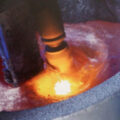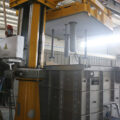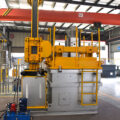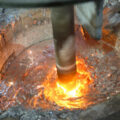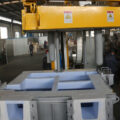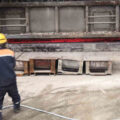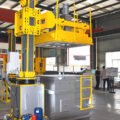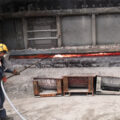Aluminum degassing machine with nitrogen is used to control the content of hydrogen, alkali metals and inclusions in aluminum melt before casting. In the past twenty years, aluminum nitrogen degassing machine has been developed comprehensively.
Hydrogen solubility and influencing parameters aluminum melt are always in equilibrium with gaseous hydrogen in the atmosphere and hydrogen in aluminum melt. But the partial pressure (or amount) of hydrogen in the atmosphere hardly matters. Hydrogen comes from water vapor in the atmosphere, which tends to react with liquid aluminum to form two problematic reaction products, aluminum oxide (inclusions) and hydrogen (gases).
Aluminum has a problem with hydrogen, not because it’s particularly soluble in liquid aluminum, but because it’s particularly insoluble in solid aluminum, so it comes out of solution during solidification. Solubility depends primarily on the temperature of aluminum.
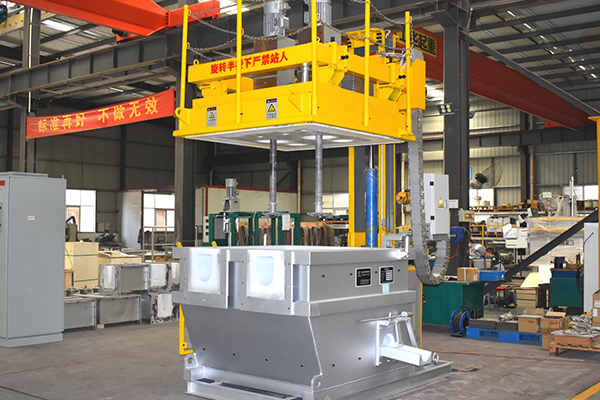
Aluminum Degassing Machine with Nitrogen requires the removal of hydrogen from the melt prior to flushing the melt with inert nitrogen gas. Understanding hydrogen removal mechanisms is critical to identifying and influencing factors that influence optimal removal methods.
Atomic hydrogen is dissolved in liquid aluminum and distributed evenly. When dry inert gas bubbles are introduced into the melt, the internal partial pressure of hydrogen is almost zero.
In nitrogen bubbles, local equilibrium is rapidly established between H concentration and H partial pressure.
The diffusion rate of hydrogen from the main to the boundary layer is limited, and the recombination rate of hydrogen from atoms to molecules is very fast.
The hydrogen concentration in the bubbles increases as they rise to the surface of the melt. The transfer rate of hydrogen depends not only on the diffusion rate but also on the total area of the bubble interface. Inert gases have large interfacial areas for smaller bubbles.
In addition, as the bubbles get smaller, each bubble stays in the melt longer. This is because the terminal velocity decreases, making hydrogen transport time longer. The deeper the reaction zone, the longer it takes to reach equilibrium because the bubbles stay in the melt longer before reaching the surface.
Therefore, Aluminum Degassing Machine with Nitrogen needs to produce the smallest bubbles at the bottom of the treatment vessel. This is achieved at high rotor speeds; The melt is also mixed to obtain a uniform distribution of hydrogen.
The development of rotary degassing systems with rotors solves the problem of insufficient gas distribution and provides bubbles in the range of 3 to 10mm in diameter.


